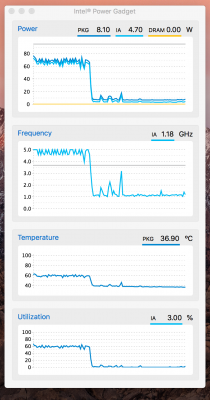Also, just to assist anyone who may be worried about overclocking and/or airflow of this case I thought this post might be helpful and I could add this to the guide itself in the Overclocking section..
I know the Internet can be an argumentative place at times, but I think the airflow concerns of this exact Phanteks Enthoo Evolv case are completely overblown. (No pun intended)

. It won't be an issue for most, but again, YMMV and I'll have to wait and see after quite some time to see if my system explodes or burns through the center of the Earth, etc.
Just to note: When I was researching my build, I also considered the
Corsair Obsidian 750D Full-Tower Case. It included a standard 750D edition which had a solid front panel with no large front vent, and the same case as an "Airflow Edition" with a mesh front for seemingly much better airflow. Makes total sense that logically a case with a mesh front would allow more air in, and thus cool things down easier, right? Well, not exactly. The guy from
this video took temperature readings of both the airflow and non-airflow editions of this case, and the results, were, let's just say, not what you might think. The solid panel showed absolutely no significant increase in CPU temps, and oddly, the temp went down under high CPU load.
So from my overclocked build, I downloaded the fantastic (and free!) Intel Power Gadget app for Mac here:
https://software.intel.com/en-us/articles/intel-power-gadget-20
OVERCLOCKED CPU At Max Load (while exporting an iMovie I created):
Frequency: 5.00Ghz
Temp: 60°C
 OVERCLOCKED CPU At Idle (about 1 min after I exported the iMovie):
Frequency: 1.18Ghz
OVERCLOCKED CPU At Idle (about 1 min after I exported the iMovie):
Frequency: 1.18Ghz
Temp: 36.9°C

I really don't see these specs as being outside the norm at all, and for my usage, I don't see airflow as an issue at all with this case. But as always, YMMV based on each person's needs and tools they heavily use on the machine.
Hope these benchmarks might assist others considering overclocking or this build, considering this case, etc.




